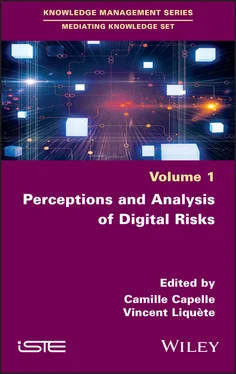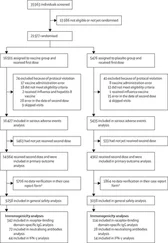The feeling of belonging to a digital native generation appears to be a lever for teachers who feel better able to transmit and share their know-how.
On the other hand, some of them do not consider digital technology as part of their role as educators and neglect both assistance for its use and the critical approach that underlies digital literacy:
I know that in history and geography they will do this much more because the subject lends itself to it and then they have the teaching of EMC (moral and civil education) where they… often they will lend themselves to it. It’s true that I consider that the students currently handle computer tools much better than I would, insofar as they have access to them […] But I’m not going to teach them how to use them (math teacher in a senior high school, 31 years old).
In this confusion between technical skills (using the tool) and intellectual and cognitive mastery (understanding/evaluating/criticizing), digital uses do not appear to be an educational issue for these teachers. The (technical or manipulative) skills of the students are not taken into account by the teacher and are even rejected, even though they could be a lever for critical education in digital uses.
The teachers who consider training students to deal with digital risks say that the protection of personal data and privacy on the Internet is the first topic to be addressed (89.2%). Image rights are also cited by 67.3% of them. Next come media literacy and copyright, cited by half the teachers, as well as cyberbullying.
However, only half of respondents (51.8%) report consulting information about digital risks, and more than half of the new teachers who have consulted information on digital risks (54.2%) feel that this information is insufficient. Another 52.3% say they have not been trained in digital uses in teaching situations. Among those who have received training in digital uses, opinions are very divided: half of them (50.1%) state that this training was not useful to them in dealing with the risks; the other half (49.3%) believe that the training enables them to deal with them. The majority of respondents (62.3%) say that training regarding digital risk management with students would be helpful to them. We also note that those who have not been trained are slightly more likely (70.9%) to feel this need. Even among those who have been trained, half (53%) still feel the need for training. The feeling of a need for training is clear, even among those who have already been trained. There is no denial of the need for training, nor is there any dispute about its usefulness.
On the other hand, those who feel that digital risk information is over-represented feel much less of a need for training. In fact, 69.2% of them do not want any particular training. On the other hand, 72.9% of those who consider that information is insufficient request training. Two hypotheses can be put forward to interpret these results. On the one hand, the fact that some teachers have a well-developed information culture may influence their sense of self-efficacy. The fact that these teachers know where to find information gives them the sense that they are able to deal with risks when needed. On the other hand, it can be hypothesized that teachers who feel the weight of media discourses on digital risks instead seek to avoid them. Thus, training on digital risks may be seen by some as counterproductive to practicing digital skills with students.
However, we can see that the more teachers feel that the risks are important for their students, the more they express the need for training. Thus, the nuance lies in the reception of the discourse on risk: while some will consider that the risks are high and require expert skills to deal with them, others will consider that the risk exists but that it remains moderate in their context and that they will be able to manage it.
The survey of digital risk perceptions among new teachers who are beginning their careers and who are, for the most part, digital natives, reveals their importance and impact on students’ digital literacy and the use of digital tools in the classroom. For many, talk of risks has a strong emotional impact that can generate a sense of incompetence and a feeling of lack of training. As a result, these digital natives do not feel more confident or competent in dealing with the issues related to digital uses in their personal context and even more so at school. Alarmist speeches about the dangers of digital technology therefore seem to have a stronger negative impact and do not encourage teachers to engage in educating students through and on digital technology.
Depictions of digital risks therefore often appear to be a barrier to education, especially when they are accompanied by a poorly developed information and digital culture in personal and professional life. In addition to this, there are differences in the idea of their role as teachers and in the interpretation of what the institution expects of them when it comes to training students in digital technology. These very different conceptions testify to the difficulties of the institution and of teacher training in clearly communicating the expectations in this regard. However, we have identified teachers for whom knowledge and consideration of digital risks are a powerful lever for accompanying and educating students in the critical uses of digital technology, provided that they themselves have the skills to become informed and to use different digital tools in their daily lives. Thus, reinforcing teacher training to develop information and digital cultures, particularly by taking into account the diversity of risks, or rather the issues at stake, appears to be a solution in order to respond to the need for critical education on digital technology and its uses in society.
Amadieu, F. and Tricot, A. (2014). Apprendre avec le numérique : mythes et réalités . Retz, Paris.
Becchetti-Bizot, C. (2017). Repenser la forme scolaire à l’heure du numérique : vers de nouvelles manières d’apprendre et d’enseigner. Report no. 2017–056, Ministry of National Education, Youth and Sports, France.
Beck, U. (2008). La société du risque : sur la voie d’une autre modernité . Flammarion, Paris.
Ben Youssef, A. (2004). Les quatre dimensions de la fracture numérique. Réseaux , 127–128(5), 181–209.
Blaya, C. (2013). Les ados dans le cyberespace : prises de risque et cyberviolence . De Boeck Superieur, Louvain-la-Neuve.
Bronner, G. (2013). La démocratie des crédules . Presses universitaires de France, Paris.
Cardon, D. (2015). À quoi rêvent les algorithmes : nos vies à l’heure des big data . Le Seuil, Paris.
Citton, Y. (2014). Pour une écologie de l’attention . Le Seuil, Paris.
Cordier, A. (2015). Imaginaire(s) de la jeunesse à l’heure du numérique : entre discours et pratiques, des imaginaires en tension. Interfaces Numériques , 4(2), 269–284.
Desmurget, M. (2019). La fabrique du crétin digital : les dangers des écrans pour nos enfants . Le Seuil, Paris.
Hayles, N.K. (2016). Lire et penser en milieux numériques : attention, récits, technogenèse . Université Grenoble Alpes, Saint-Martin-d’Hères.
Jehel, S. (2015). Les pratiques des jeunes sous la pression des industries du numérique. Le Journal des psychologues , (9), 28–33.
Liquète, V. and Le Blanc, B. (2017). Introduction générale. In Les élèves, entre cahiers et claviers, Liquète, V. and Le Blanc, B. (eds). Hermès La Revue , 2(78), 11–14.
Merzeau, L. (2013). L’intelligence des traces. Intellectica – La revue de l’Association pour la Recherche sur les sciences de la Cognition (ARCo) , 1(59), 115–135.
Читать дальше












